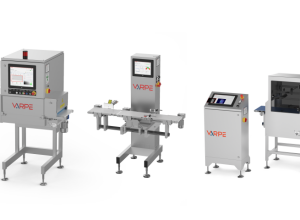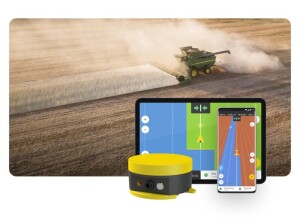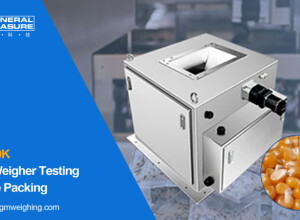Cardinal Scale (USA) - Article written by Steve Langford, VP, Engineering Services, Cardinal Scale Manufacturing Co.
As a member of the scale industry, it is likely that you are already familiar with the legal requirements for using a scale in commerce, but do you know how these rules came about? When you fill your vehicle with fuel, you will see a seal on the dispenser indicating that it has been both tested and approved by a local weights and measures inspector. What rules apply to this fuel dispenser? How do you know that the chicken you purchase actually weighs what the tag says or how do you know that the two liter soda bottle you purchase really contains two liters? The following is a simple overview of our nation’s legal metrology system that strives for equality in the marketplace.
You have probably heard of or may even have a copy of the NIST Handbook 44. This handbook contains the specifications, tolerances, and technical requirements for weighing and measuring devices. It is published every year following the annual meeting of the National Conference on Weights and Measures or NCWM. Handbook 44, or commonly referred to as H44, is divided into sections with each section dedicated to a specific type of device. The first section is the General Code which applies to all device types and is followed by Section 2 for scales. The other sections cover other device types like vehicle tank meters and fuel dispensers. H44 can be considered to be the “Bible” for the scale industry but where do the requirements and regulations contained in it come from?
The National Conference on Weights and Measures is made up of representatives from the federal, state and local government, as well as industry members and consumers. This conference is responsible for the maintenance of H44, and meets twice a year. The Interim Meeting of the NCWM is traditionally held in January where new and on-going items to be placed in the handbook are discussed. Open hearings are held where any member can voice their opinion concerning the adoption of an item. The NCWM also offers an online system allowing members to share their support or opposition to the items via the NCWM website. The Specifications and Tolerances Committee or S&T is responsible for reviewing items submitted and determining the status of the item. Item statuses can vary, and include the following: voting - indicating that it is scheduled for a vote at the July meeting; developing - indicating that while the item has merit, it needs additional refinement; withdrawn - meaning that the item has been withdrawn from the S&T agenda and is no longer under consideration; or informational - meaning that the item is for information only. At the conclusion of the January Interim Meeting, the S&T Committee prepares a report listing each item on their agenda and the status assigned to it. This report is published in NCWM Publication 16 that is made available prior to the July meeting of the NCWM.
The July meeting of the NCWM is similar to the Interim meeting in January in that open hearings are held seeking further input from interested parties on each item before the NCWM. At the conclusion of the open hearings, the S&T Committee prepares its final report which is then available to members prior to the voting session that normally takes place on Wednesday. The voting system is designed such that two groups, the House of State Representatives and the House of Delegates must both vote in favor of an item before it is adopted. The House of State Representatives is made up of one representative from each state represented and officially designated by their state. The House of Delegates is made up of the Active Members present at the meeting. An Active Member is one that is employed by a governmental agency. Members from industry and consumer groups are referred to as Associate Members and are only allowed to vote on non-technical issues. Once an item reaches voting status, it is then placed before members for a vote. If both Houses accept the item, it will be included in the next edition of H44 and will normally become effective on January 1st. For a better understanding of how the NCWM is organized and operated, you may view their bylaws at www.ncwm.net/about/bylaws.
I’m sure you’re thinking well that’s all well and good but where do these issues come from? The simple answer is from anyone and that includes you. To reach the voting floor, an item must complete a series of steps with the first consisting of completion and submission of Form 15. This form is available from the NCWM website (www.ncwm.net) and asks for information about the change you wish to make. Before the item can be placed on the NCWM S&T Committee agenda, it must first be submitted to and acted on by one of the four regional associations. The four regional associations are organized much like the NCWM and operate in a similar fashion but their members typically come from a specific region of the US. There is a central, northeast, southern and western regional association. These western and southern associations meet once a year, while the central and northeast meet twice a year. When you submit Form 15, you indicate which one of the regional associations to which you want it sent. The selected regional association will hold open hearings seeking input on your item and, afterward, will be deliberated by a committee. If it is determined that your proposal has merit, it will be forwarded to the NCWM and placed on the S&T committee agenda.
Once your proposal has been sent to the NCWM by the regional association, it will be placed in NCWM Publication 15 listed in the committee agenda. A process similar to that of the regional association will take place at the January Interim Meeting of the NCWM but on a much larger scale. Here, open hearings will be held seeking comment on your proposal followed by committee work sessions where the item is further deliberated. At the conclusion of the Interim Meeting, the committee will determine what status is to be assigned to your item. If a voting status is assigned, the item will be published in NCWM Publication 16 preceding the Annual Meeting of the NCWM in July. If the vote is then in favor of the item, it will be added to the next edition of NIST Handbook 44 and become effective January 1st of the following year.
At this point, you may be asking how these rules and regulations that started out as submissions of Form 15 are enforced. States adopt either a specific edition of H44 or the current edition. State weights and measures officials along with local weights and measures inspectors use H44 as a tool when they inspect measuring devices in the field. Although all states adopt H44 in one form or another, most states add state-specific requirements to it. What may be acceptable in one state may not be in an adjacent state. For this reason, I highly recommend that you become a member of your regional association where you can keep up on the latest changes and meet with your state weights and measures personnel. It is also a good idea to become a member of the NCWM. NCWM membership offers a number of benefits including a free copy of NIST Handbooks 44 and 130 along with Publications 15 and 16. To become a member, simply visit the website at www.ncwm.net and, while there, you can view the activities of your regional association.
Hopefully, you have a better idea of how new requirements come into being and how you can voice your opinion of them but what about the measuring devices like scales and gas pumps? Who certifies them and how do they know that they are appropriate for legal-for-trade applications? The National Type Evaluation Program, or NTEP, is part of and managed by the NCWM. Under the NTEP, devices are submitted to a NTEP or NIST lab for evaluation and, if found to be compliant, an NTEP Certificate of Compliance is issued. There are a number of NTEP labs administered by states and specializing in various types of devices. The labs in Ohio, Maryland, California and New York traditionally evaluate scales while the NIST Force Lab and the California lab handle load cells. If you are curious whether a device has an NTEP certificate, it is a simple matter of looking at the nameplate. Beginning in 2001, devices must have their NTEP Certificate of Conformance number listed on the nameplate. For devices manufactured prior to this date or if you are unable to locate the nameplate, you can look up and view the certificate on the NCWM website by clicking on the NTEP tab.
Now that you know that the device has been evaluated and found to be compliant, you may be wondering how do you know that production devices perform to the same level as the device evaluated in the NTEP lab? The short answer is you don’t. The NCWM recognized this potential problem back in 1999 and has taken steps to address it. The NCWM and industry worked together to develop the Verified Conformity Assessment Program or VCAP to ensure production devices perform at the same level as the device evaluated. This is done by a third party audit of the manufacturer’s quality management system along with a review of their test equipment and procedures. The program began with audits of all load cell manufacturers and has moved forward to encompass load-receivers using non-NTEP load cells and of 2,000 pounds capacity or less. As this is written, the NCWM Board of Directors is considering expanding the program to include all device types affected by temperature. More information regarding the implementation of the VCAP can be found on the NCWM website.
The next time you look at a gas pump, scale, or package weight, know that there is an army of weights and measures professionals at work to ensure that the quantity of the commodity you purchase is the quantity that you pay for. Unfortunately, most of these folks work in the background and are seldom recognized for their work, we should applaud them for their hard work to keep a fair and equitable marketplace and a level playing field for manufacturers. Remember that Proverbs 20:23 (NIV Version) states, “The Lord detests differing weights, and dishonest scales do not please him.”
Source Link
Other Articles from Cardinal Scale
© Cardinal Scale / International Weighing Review
This website uses cookies. By browsing our website you accept the use of cookies. For more information read our Terms of Use.
An Overview of the U.S. Legal Metrology System by Cardinal Scale
- By Cardinal Scale
- Posted on Mar 19, 2014

For more information about this article from Cardinal Scale click here.
Other articles from Cardinal Scale.
Interesting Links:
List all your Scales and other Weighing Products (new and used) on our Marketplace !
Visit AutomationInside.com for Automation and Technology Related News!
Are you interested to include your Link here, visible on all WeighingReview.com articles and marketplace product pages? Contact us
List all your Scales and other Weighing Products (new and used) on our Marketplace !
Visit AutomationInside.com for Automation and Technology Related News!
Are you interested to include your Link here, visible on all WeighingReview.com articles and marketplace product pages? Contact us
© Cardinal Scale / International Weighing Review
Previous article
New Demo Video showing Welvaarts’ On-Board Weighing for Waste Collection Trucks
Next article
Ishida proves a good sport for variety chocolate pack
Popular News
Weighing Review Newsletter
Popular Tags
Login


























Interested? Submit your enquiry using the form below:
Only available for registered users. Sign In to your account or register here.